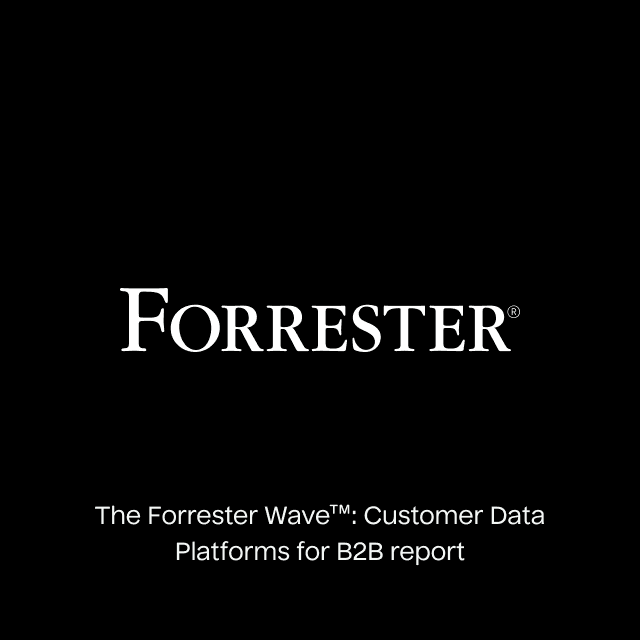If you’re a lifecycle marketer reading this, there’s a good chance you’re either in the middle of an ESP migration or will be planning one soon.
You’re not alone. For the fifth consecutive year, marketing automation platforms ranked as the most-replaced application in the martech stack. This is not an anomaly; it’s a cycle.
I've seen this play out many times from the inside. Over the past decade, I've worked in martech at major email service providers (ESPs), including Salesforce Marketing Cloud, Iterable, and Cordial, partnering with hundreds of marketing teams. I listened to their goals, frustrations, and ultimately the reasons they decided to switch platforms. Triggers varied from budget pressure, to new leadership wanting their preferred tool, to promises of shiny new features. But most often, the real issue was the same: performance had stalled and teams felt constrained by their platform's limits.
So marketers switch tools. And after months of replatforming, migrating data, warming IPs, and rebuilding every workflow, launch day comes with a burst of optimism. But six to twelve months later? Those performance metrics often look eerily familiar.
Different ESP, same problems.
Which begs the question: What if your ESP isn't the problem? What if the way you've always marketed is what's holding you back?
The ESP migration trap
The lifespan of the average marketing automation platform is three to five years.
That's barely enough time to fully implement the platform, let alone see sustained results. But here's what nobody wants to admit: the reasons teams switch rarely address the actual performance problem.

Reasons for replacing commercial martech applications. Source: 2024 MarTech Replacement Survey.
Let's be honest about why migrations happen. Teams become critical of their ESP for stagnant performance and point to missing features as the culprit. "Our current platform's A/B testing isn't sophisticated enough." "The journey builder is clunky." "We need a better campaign editor."
So they migrate to a platform promising a sleeker template builder, more intuitive UI, or slightly better segmentation tools.
But those new features are just prettier versions of the same manual, segment-based logic ESPs have used for 20 years.
You have exponentially more customer data, more channels to orchestrate, and higher expectations for personalization than ever before. Yet you're still making these decisions manually, campaign by campaign, segment by segment.

The reality is ESPs aren’t broken. They are actually really good at doing what they are built for—activating data and delivering unified messages across channels. And while each has its strengths, most ESPs are converging on the same feature set.
The real problem? The marketing playbook paradigm hasn't evolved in over a decade.
Every ESP still operates the same way: You manually segment audiences, build rule-based journeys, design templates, and run A/B tests one variable at a time. You're the one deciding what to send, to whom, when, and through which channel, across millions of customers.
“Every ESP promises true 1:1 personalization, but what they often deliver is better segmentation and orchestration. But with millions of customers and hundreds of variables, there’s still an infinite combination problem you simply can’t A/B test your way out of”

Ron Dorsey
Sr. Director, Lifecycle Marketing at Eargo
Migrating ESPs doesn’t change this methodology problem. What you actually need is a different approach that can handle the complexity modern marketing demands.
You need an intelligent decisioning layer above your marketing channels that can test, learn, and optimize faster than any human marketer could to make millions of micro-decisions in real time.
AI is defining a new marketing era
Ten years ago, every company wanted to be "digitally native." Today, the rallying cry is to be "AI-first."
Why? AI isn't just another feature. It's rewriting the entire marketing playbook and doing so quicker than anyone anticipated.
Generative AI and large language models (LLMs) made AI accessible for marketers. This was quickly followed by predictive AI using propensity models to score the likelihood a user would take an action. Fast forward to today, advanced reinforcement learning models can now autonomously make compound sets of decisions that would be impossible for any human or traditional ESP to handle at scale.
And ESPs see this paradigm shift in marketing coming, which is why they're pivoting to build toward AI agent capabilities. The companies that will leap ahead in this new era are those putting AI at the center of their marketing strategy and decisioning.

The new methodology: Outcomes-based marketing
This emerging approach flips the traditional lifecycle paradigm on its head.
Instead of being audience-led or journey-led, it’s outcomes-based. You set your business goals (like driving repeat purchases, or increasing customer LTV), provide the content, set guardrails, and then let the AI agents continuously optimize every decision across your owned channels to maximize that outcome.

AI Decisioning unlocks outcomes-based marketing
This intelligence layer operates fundamentally differently than traditional marketing automation: Here’s how:
-
It uses reinforcement learning to continuously test, learn, and reason faster than human marketers ever could.
-
It balances exploration (trying new offers, channels, times) with exploitation (doubling down on what works) through experimentation optimization
-
It contextualizes customer data to personalize down to the individual because segments of one are no longer a pipe dream.
In addition, this approach doesn't require ripping out your existing infrastructure. A composable AI decisioning layer sits above your current ESP, connecting to your data warehouse for complete customer context while orchestrating decisions across whatever execution channels you already use.
The result? You keep the intelligence layer separate from the execution layer.

Just as AI transformed advertising by automating campaign optimization, this new methodology is doing the same for lifecycle marketing. Instead of getting bogged down in manual campaign workflows and endless A/B testing, marketers can now deploy an AI layer that sits above their existing marketing channels to make millions of micro-decisions in real time—determining the right content, timing, and channel for each individual customer automatically.
“AI decisioning becomes powerful when it serves as the brain across all your marketing, not trapped in a single platform. Only then can we as marketers consistently deliver what customers actually want, not just what our tools can handle”

Krish Sailam
VP Marketing Technology
Stop switching send buttons
Switching ESPs doesn’t solve today’s complex marketing problems. In time, you’ll often end up back in the same place, with the same workflows, and the same plateauing results.
Leading brands breaking through aren’t the ones migrating ESPs every few years. They’re the ones rethinking decisioning at scale entirely. They’ve realized the old playbook is the real bottleneck—and they’re rewriting it with AI agents.
So before you sign that next ESP contract, ask yourself: Is the problem really your ESP? Or are you simply missing the AI decisioning piece that puts real personalization within reach?
If you’re ready to stop switching send buttons and transform your marketing with AI Decisioning, book a demo with Hightouch.















